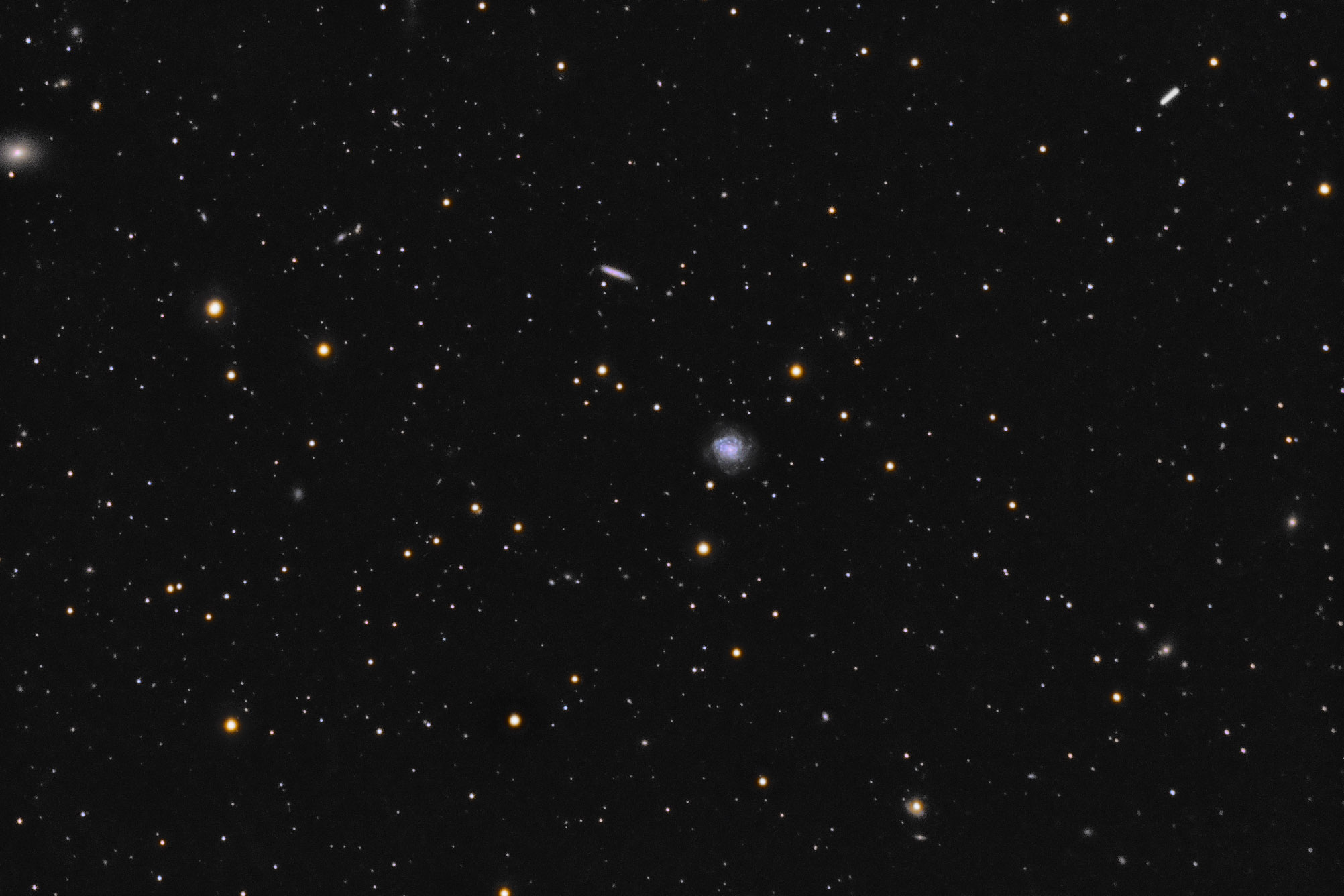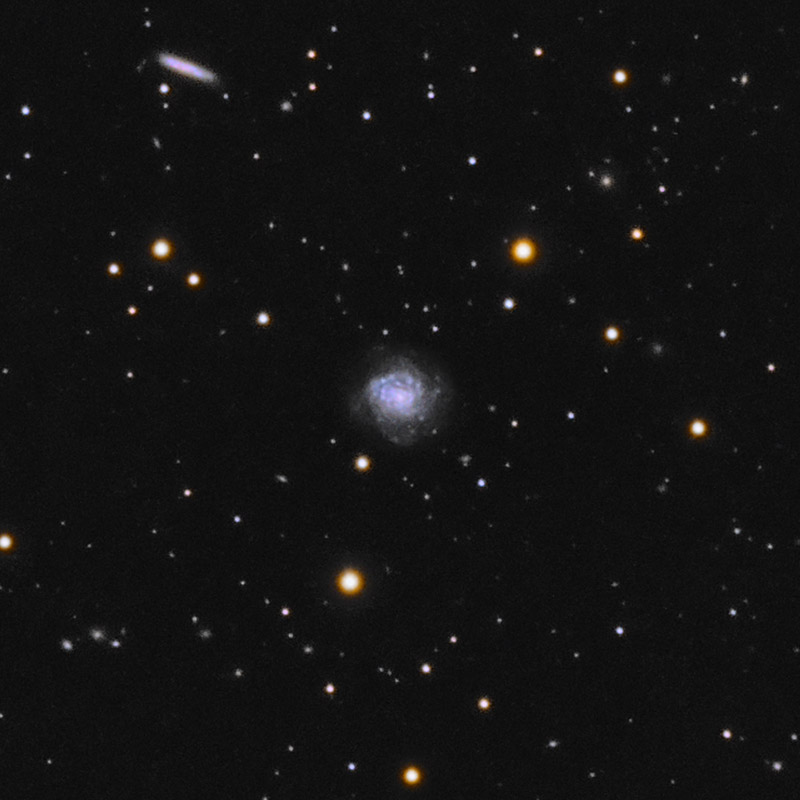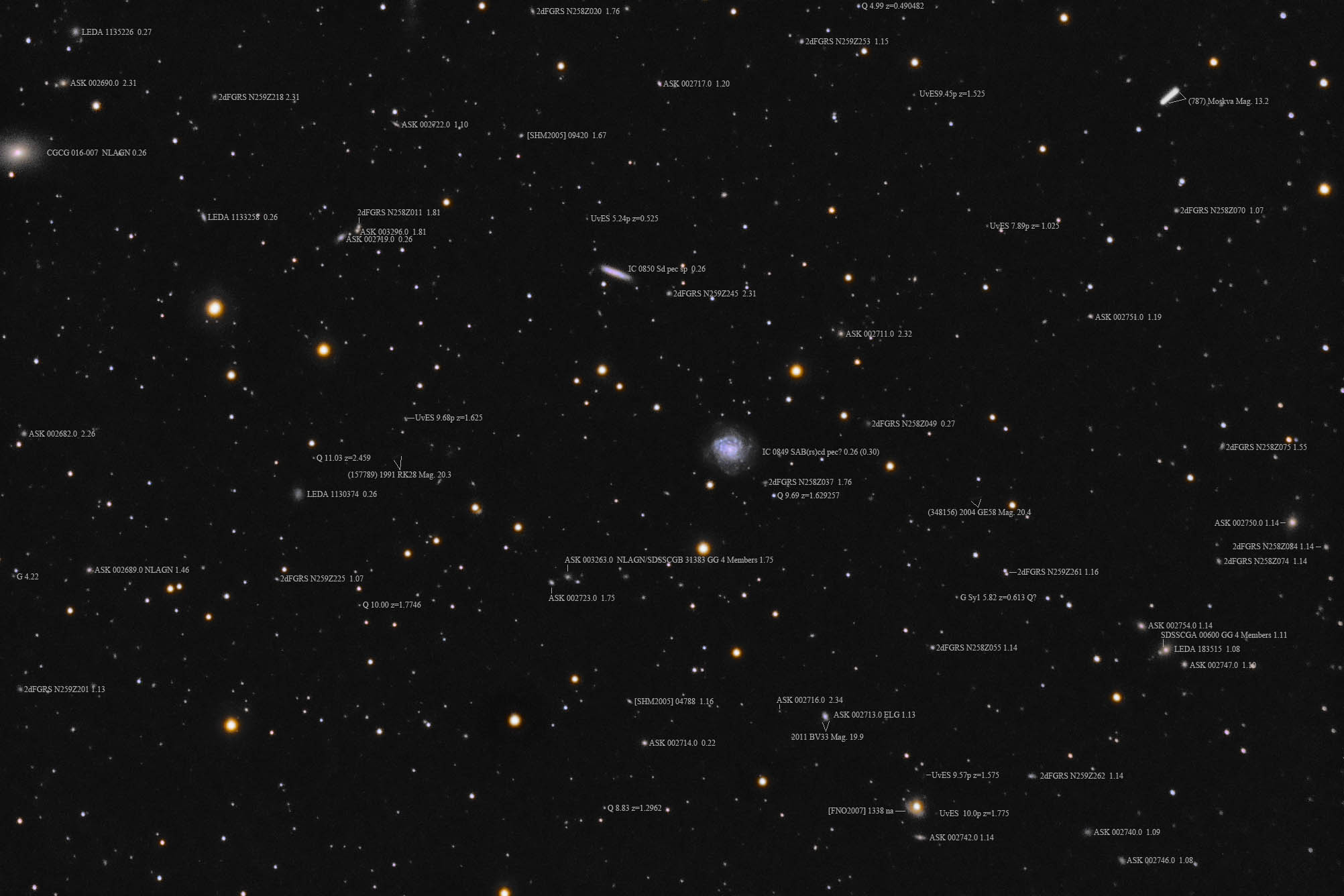| Description | Images |
Object name: IC0849Designation(s): IC0849, IC0850, IC 0849 is a SAB(rs)cd pec? face on spiral galaxy in central Virgo about 260 million light-years distant by redshift and 300 million by analysis of a type II super nova's light. It has a rather ragged appearance with its arms made up star clusters. At first glance the nucleus appears off center but when the faint outer arms are considered it is seen that it really is in the center. It appears to have several companions with similar redshift including IC 850 which is an edge on galaxy classed as Sd pec. Oddly no dust lane is seen in it as is usually the case with edge on spirals of its classification. Several dwarf galaxies at the same redshift can be seen in the field including LEDA 1130374 and LEDA 1133258 and the very small 2dFGRS N258Z049. Related Designation(s):2dFGRS N259Z243, 2MASS J13073870-0056328, 2MASS J13075027-0052057, 2MASX J13073872-0056327, 2MASX J13075031-0052057, 2MASXi J1307387-005632, 2MASXi J1307502-005206, 2MFGC 10443, 2PIGG NGPGAL B+3.42638-0.01050, ASK 002715.0, ASK 003267.0, CGCG 016-003, CGCG 016-004, CGCG 1305.0-0040, CGCG 1305.2-0035, ECO 03903, ECO 03905, GALEXASC J130738.78-005631.8 , GALEXASC J130750.20-005206.5 , GSC 4957 00715, HIPASS J1307-00, HIPEQ J1307-00, IC 0849, IC 0850, IC0849, IC0850, IRAS 13050-0040, IRAS 13052-0036, IRAS F13050-0040, IRAS F13052-0036, ISOSS J13076-0056, ISOSS J13078-0052, MAPS-NGP O_617_0162711, MAPS-NGP O_617_0162867, MCG +00-34-002, MCG +00-34-003, Mr18:[BFW2006] 00071 NED01, Mr19:[BFW2006] 00128 NED01, Mr20:[BFW2006] 00319 NED01, NSA 001702, NSA 001705, NVSS J130738-005631, NVSS J130750-005203, PGC 045480, PGC 045491, SDSS J130738.66-005632.6, SDSS J130738.69-005632.7, SDSS J130738.69-005632.8, SDSS J130738.69-005632.9, SDSS J130750.22-005206.3, UGC 08202, USGC U516 NED05, USGC U516 NED06, UZC J130738.8-005632, UZC J130750.0-005207, [BFW2006] J196.91123-00.94246 , [FNO2007] 1340, [FNO2007] 1341, [SLK2004] 0783, [SLK2004] 0784, [TTL2012] 064063, [TTL2012] 064067, |


